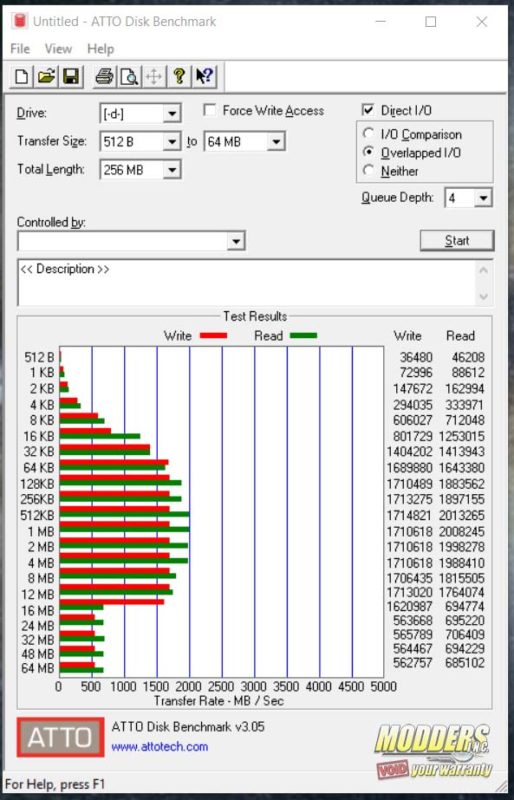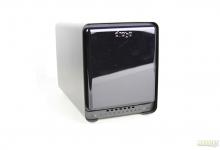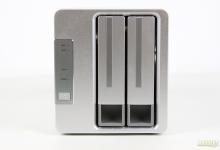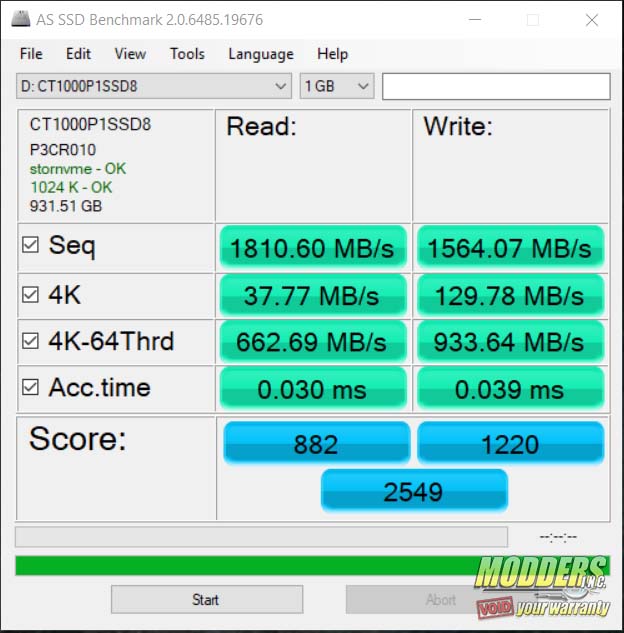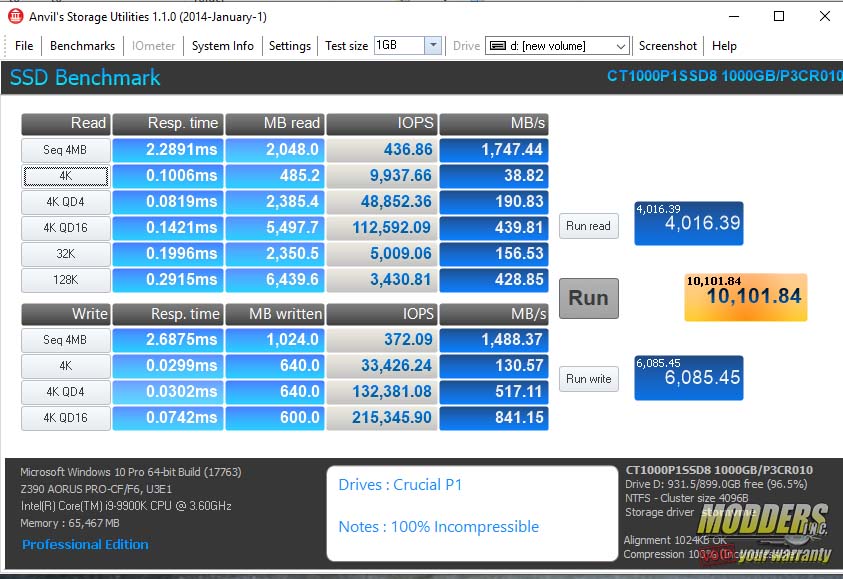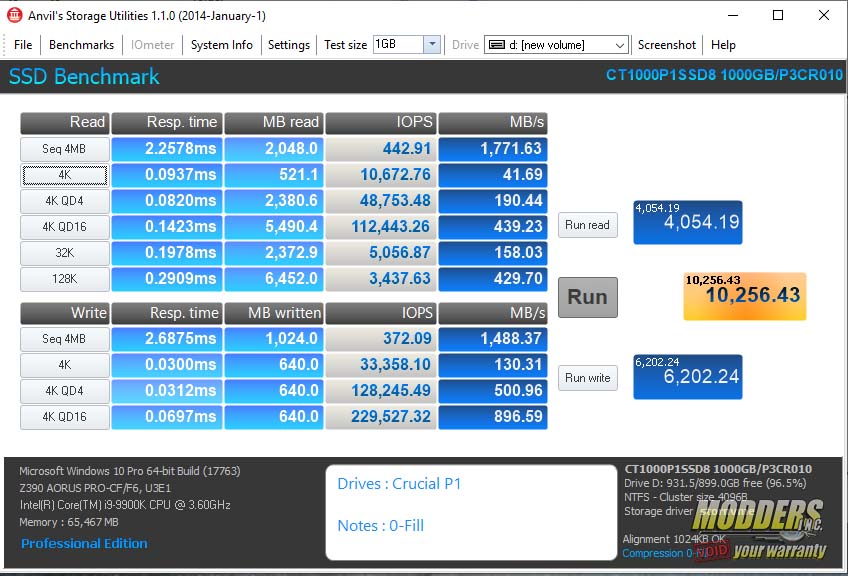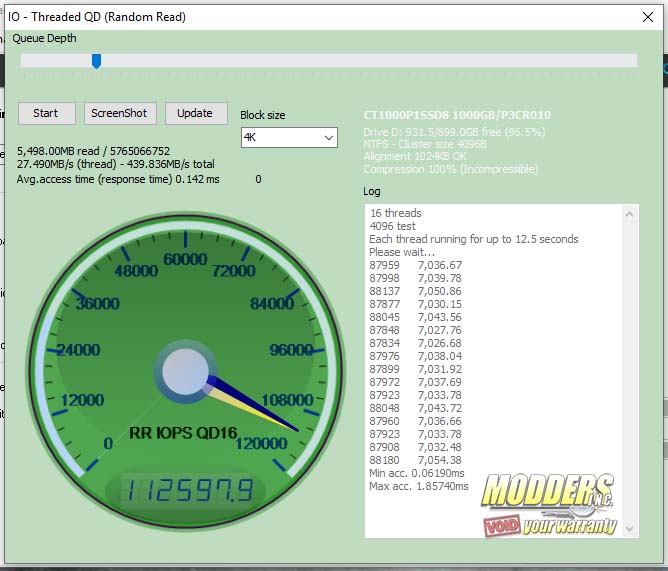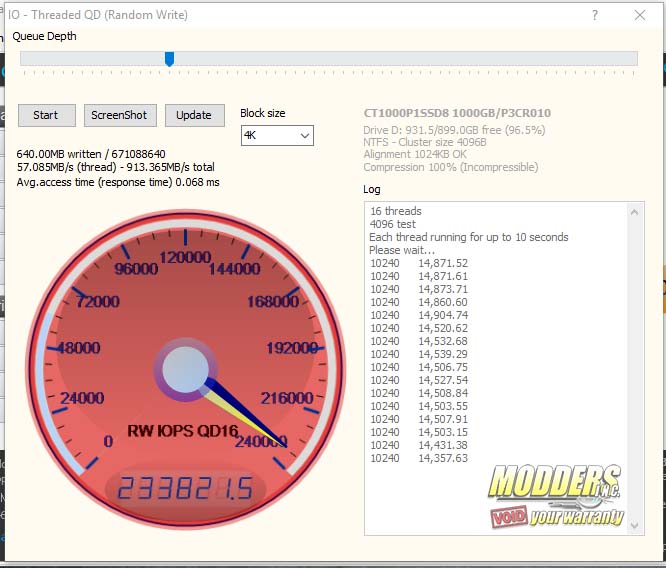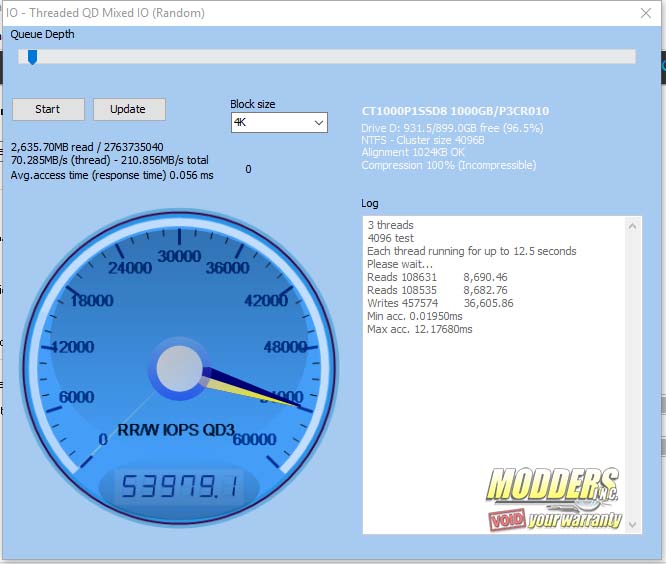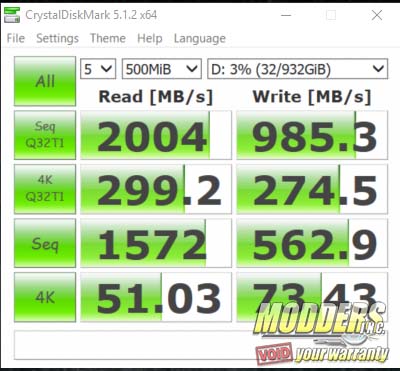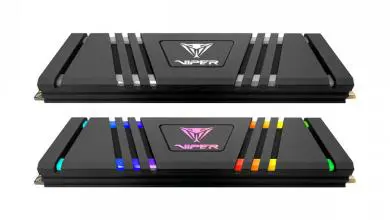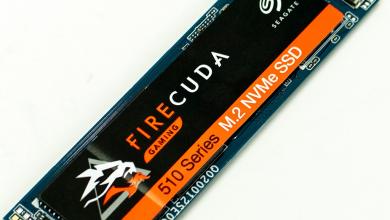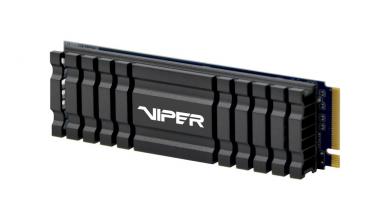Crucial P1 NVMe M.2 SSD Review
Test System and Testing Procedures and Benchmarks
System Configuration
- Z390 Aorus Pro
- Intel I9 9900k (stock speed)
- 64gb of G. Skill Trident Z @ 3200 MHz
- Intel 660p NVME M.2 SSD (os)
- EVGA 1600-Watt SuperNova P2
- MSI Gaming X Trio 2080 TI
- Swiftech H320 X2 Prestige AIO Cooler
- Primochill Praxis Wetbench
Testing Procedure
We tested the Crucial P1 using the following software.
- Microsoft Windows 10 Professional
- ATTO Disk Benchmark
- AS SSD
- Anvil’s Storage Utilities
- CrystalDiskMark 3.0
The drive is labeled as the D drive on the system it was tested in. Its used as storage for music, pictures and videos, as well as projects in Adobe Premiere Pro, Photoshop and Audition. Being a new drive, there were about 800 GB of 931 GB free. So, not much space was used at all. The Crucial P1 was covered by Gigabytes Thermal Guard which is an SSD heatsink designed to keep the SSD cooler to help increase performance. In previous testing, the Thermal Gaurd has kept the drive cooler by about 4-5°c. This was recorded across several different drives. These drives included the Patriot Hellfire, Samsung 850 EVO, Samsung 860 Evo and the Intel SSD 6.
The SSD 6 using the same 64-layer Micron 3D QLC Nand. The average temperature difference of all the drives, with and without the Thermal Gaurd, was 5°c. However, I didn’t really see a huge difference in performance. But, the cooler temperatures over the lifetime of the drive could extend its life. Each benchmark was run three times each and we recorded the best overall result. The system was left idle for about 20 minutes between each run, as well as each benchmark. This gives the system, and drive a little bit of time to cool down and rest.
ATTO Disk Benchmark
The ATTO Disk Benchmark utility was designed to measure regular disk drive performance. However, its more than capable measuring both USB flash drive and SSD speeds as well. The utility measures disk performance rates for various sizes of files and displays the results in a bar chart showing read and write speeds at each file size. The results are displayed in megabytes per second
The sequential read speed of the Crucial P1 in the ATTO Disk Benchmark was about 2,013.3/s. This was well over the advertised read speed of 1,714.8MB/s. In our testing, the Crucial P1 did best in the ATTO Disk Benchmark. In both the read and write speeds, the Crucial Pr recorded speeds just over the advertised speeds of 2,000 MB/s read and 1,700 MB/s write.
AS SSD Benchmark
AS SSD Benchmark is a simple and portable utility which helps you measure the effectiveness and performance of any solid state (SSD) drives connected to your system. It will test “Seq”, “4K”, “4K-64Thrd” and Access Time. At the end, it will give your SSD a score. 4K tests the read/write abilities by access random 4K blocks while the Sequential test measures how fast the drive can read a 1GB file
In the AS SSD Benchmark, the Crucial P1 hit 1,810.60MB/s on the read and 1,564.07on the write.
Anvil’s Storage Utilities
Anvil’s Storage Utilities is a powerful, older, yet still relevant performance measurement tool for traditional hard drives and SSDs. The tool can monitor, and test read and write speeds on hard drives while also providing information from the Windows Management Instrumentation (WMI) that provides basic information about the disk and its parameters, including partitions and volumes.
We tested the Crucial P1 in the Anvil’s Storage Benchmark on both the 0-Fill and 100% incompressible settings. On the 0-Fill test, the Crucial P1 hit 1,771.63 MB/s on the read and 1,488.37 on the write speed. This gave the 660p an overall score of 10,256.43 On the 100% incompressible test, the Crucial P1 hit 1,747.44 MB/s on the read and 148.37on the write speed. This gave the Crucial P1 an overall score of 10,101.84. The read and write speeds on both the 100% incompressible and the 0-Fill test weren’t bad at all, but still a bit below the advertised speeds. This is the first time I’ve seen the write speeds the same on both tests.
Anvil also has random read, write and mixed IOPS (Input/output operations per second) tests as well. For random read IOPS, the Crucial P1 hit 112,597.9 IOPS. For Random write IOPS, the Crucial P1 hit 233,821.5 IOPS. Last was the random read/write or mixed IOPS test. The Crucial P1 hit 53,979.1 IOPS on this test.
CrystalDiskMark 5.2.1
“CrystalDiskMark is designed to quickly test the performance of your hard drives. Currently, the program allows to measure sequential and random read/write speeds.”
In Crystal Disk Mark, the sequential read speeds hit over the advertised speeds at 20004 MB/s. However, the write speeds were much slower than the advertised speed of 1700 MB/s at only 985.5 MB/s.
